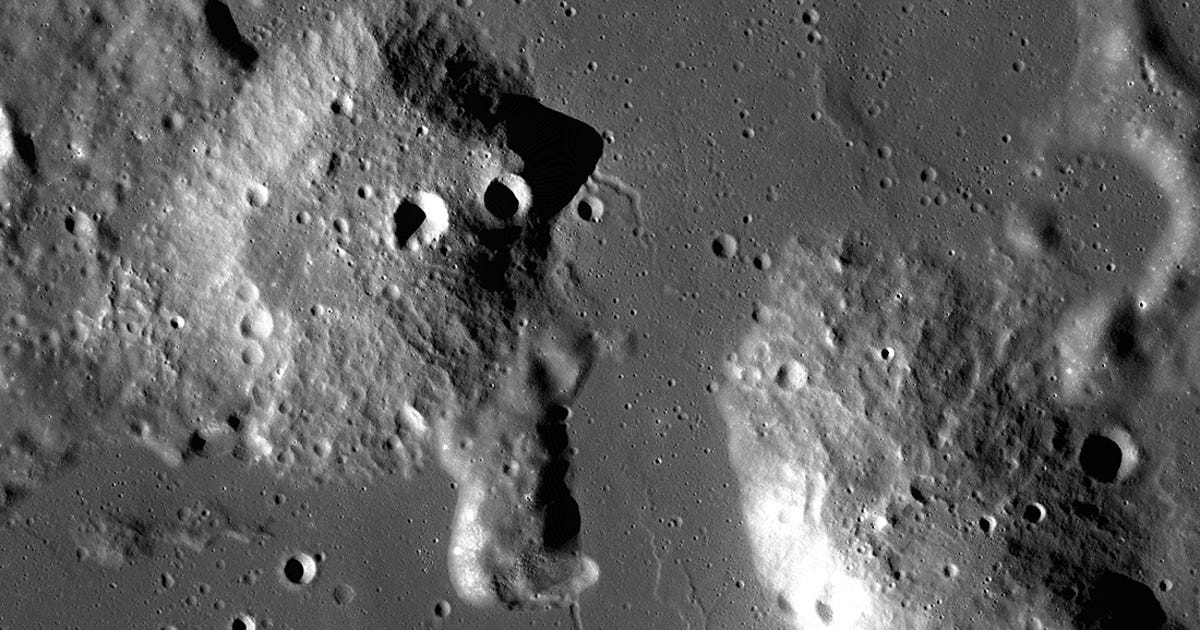
Within the coming decade, NASA is made up our minds to emulate Apollo-era power by means of bringing area exploration again to the moon. The company has a timeline of formidable missions, jointly dubbed the Artemis plan, poised to culminate within the sensible realization of shocking sci-fi fantasies like lunar flooring stations, cars, energy resources or even the “Lunanet.”
And on Thursday, NASA introduced an replace to 1 such thrilling moon venture: Fixing the puzzle of the Gruithuisen Domes.
Principally, telescopes from right here on Earth display scientists that there are a couple of dome-shaped buildings at the moon distinct from surrounding terrain. After years of statement, many concluded the so-called Gruithuisen Domes will have to be product of one of those magma, or melted rock normally stemming from volcanic task, wealthy in silica and very similar to the composition of granite.
However there is an impressive query.
“On Earth,” NASA mentioned, “silicic volcanoes normally shape within the presence of 2 components — water and plate tectonics.” Neither of the ones are to be had at the moon. Thus, it is nonetheless a thriller how the Gruithuisen Domes may’ve shaped. What are they?
So, in tandem with the Artemis missions, NASA is locked and in a position to dissect the bits and bobs of the atypical lunar enigmas with a brand new science device referred to as the Lunar Vulkan Imaging and Spectroscopy Explorer, or Lunar-VISE.
Technically, Lunar-VISE is a mixture of 5 person elements, two of which can be fastened on a desk bound moon lander and 3 that’ll be hooked up to a cellular rover. Regardless, Lunar-VISE will analyze the lunar regolith on the most sensible of the unusual domes — that simply refers to a blanket of free rock and mud on the very best issues of those buildings.
The purpose is to check “geologic processes of early planetary our bodies which might be preserved at the moon by means of investigating an extraordinary type of lunar volcanism,” mentioned Joel Kearns, deputy affiliate administrator for exploration in NASA’s Science Undertaking Directorate.
NASA believes this may occasionally assist decode what the domes’ composition in point of fact is and that, expectantly, the remainder of the Gruithuisen saga will observe. Within the grand scheme of items — past in spite of everything striking a long-standing lunar puzzle to relaxation — this may tell long run Artemis missions that’ll ship astronauts or robots to tread throughout Earth’s sparkling spouse, as a result of touchdown any kind of object at the moon may take pleasure in figuring out what all sorts of lunar touchdown surfaces are like.
Plus, as a facet word, in conjunction with their Lunar-VISE expose, NASA additionally launched main points of but any other attention-grabbing science venture for Artemis. Briefly, the company plans on sending a undeniable form of yeast to the lunar floor the usage of a science suite referred to as the Lunar Explorer Device for area biology Programs, or LEIA. Then, the staff will wait and watch what occurs when the organism is uncovered to microgravity and space-borne radiation.
It is promising for the reason that yeast they are sending, referred to as Saccharomyces cerevisiae, “is crucial type of human biology, particularly within the spaces of genetics, cell and molecular replication and department processes, and DNA injury reaction to environmental elements reminiscent of radiation,” in step with NASA.
In different phrases, data derived from the Artemis yeast experiment may in the future assist organic research on Earth in addition to resolve exactly how area impacts the human frame. This has proved to be a an important matter in recent years, as business and science-motivated spaceflight continues to ramp up — in reality, with sufficient vigor to signify we are already in the second one iteration of the Apollo years.
